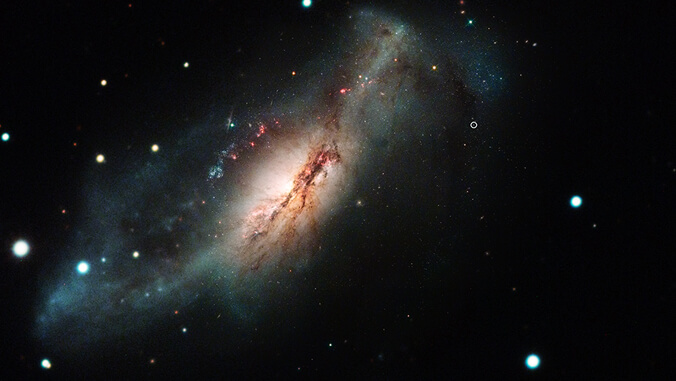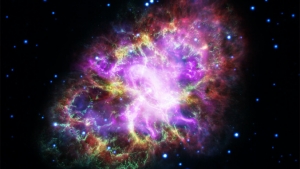
After an international team of astronomers discovered the first signs of a new type of supernova, the researchers turned to the W.M. Keck Observatory on Maunakea to confirm their sighting. The find is expected to provide new insights into the life and death of stars and help to verify a four-decades-old theory and a mystery documented about 1,000 years ago. The study is published in Nature Astronomy.
“One of the main questions in astronomy is to compare how stars evolve and how they die,” said Stefano Valenti, professor of physics and astronomy at the University of California, Davis and a member of the team that discovered and described supernova (SN) 2018zd. “There are many links still missing, so this is very exciting.”
There are two main types of supernova. One is an iron core-collapse supernova that occurs when a massive star, more than 10 times the mass of the Sun, runs out of fuel and its core collapses into a black hole or neutron star. The second type is a thermonuclear supernova, which occurs when a white dwarf star—the remains of a star up to eight times the mass of the Sun—explodes.
In 1980, Ken’ichi Nomoto of the University of Tokyo predicted a third type called an electron-capture supernova.
Researchers used Keck Observatory’s low resolution imaging spectrometer and deep imaging and multi-object spectrograph to probe images of SN 2018zd to see if its characteristics align with the theory predicting that electron-capture supernovae should show an unusual stellar chemical spectrum years later.
Explaining the Crab Nebula

The discovery also illuminates the 1,000-year mystery of the supernova that was seen all over the world in the daytime. In 1054 A.D., a supernova called SN 1054 occurred in the Milky Way. According to Chinese and Japanese records, it was so bright it could be seen in the daytime for 23 days and at night for nearly two years. The resulting remnant—the Crab Nebula—has been studied in great detail.
It was previously the best candidate for an electron-capture supernova, but this was uncertain, partly because the explosion happened nearly 1,000 years ago. The new discovery increases the confidence that the historic SN 1054 was an electron-capture supernova.
The research is part of the Global Supernova Project. The work was partly supported by grants from the National Science Foundation and NASA.
For more information go to the Keck Observatory website.
- Related UH News stories
- UH to lead NASA space telescope study on nature of dying stars, May 22, 2021
- Keck Observatory completes major sustainability, solar panel project, December 14, 2020
- Keck astronomer awarded Nobel Prize for trailblazing black hole research, October 8, 2020

